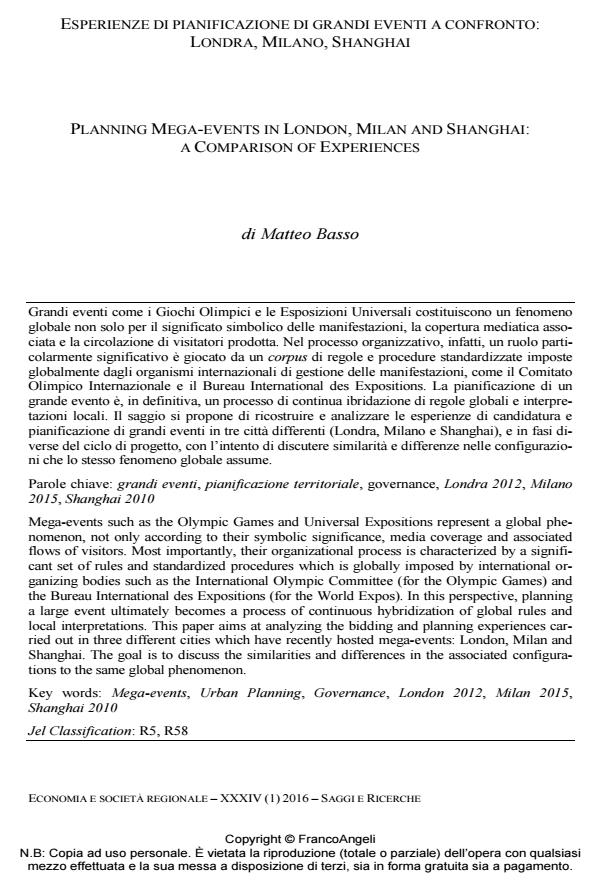Planning mega-events in London, Milan and Shanghai: a comparison of experiences
Journal title ECONOMIA E SOCIETÀ REGIONALE
Author/s Matteo Basso
Publishing Year 2016 Issue 2016/1
Language Italian Pages 18 P. 124-141 File size 243 KB
DOI 10.3280/ES2016-001009
DOI is like a bar code for intellectual property: to have more infomation
click here
Below, you can see the article first page
If you want to buy this article in PDF format, you can do it, following the instructions to buy download credits

FrancoAngeli is member of Publishers International Linking Association, Inc (PILA), a not-for-profit association which run the CrossRef service enabling links to and from online scholarly content.
Mega-events such as the Olympic Games and Universal Expositions represent a global phenomenon, not only according to their symbolic significance, media coverage and associated flows of visitors. Most importantly, their organizational process is characterized by a significant set of rules and standardized procedures which is globally imposed by international organizing bodies such as the International Olympic Committee (for the Olympic Games) and the Bureau International des Expositions (for the World Expos). In this perspective, planning a large event ultimately becomes a process of continuous hybridization of global rules and local interpretations. This paper aims at analyzing the bidding and planning experiences carried out in three different cities which have recently hosted mega-events: London, Milan and Shanghai. The goal is to discuss the similarities and differences in the associated configurations to the same global phenomenon.
Keywords: Mega-events, Urban Planning, Governance, London 2012, Milan 2015, Shanghai 2010
Jel codes: R5, R58
Matteo Basso, Esperienze di pianificazione di grandi eventi a confronto: Londra, Milano, Shanghai in "ECONOMIA E SOCIETÀ REGIONALE " 1/2016, pp 124-141, DOI: 10.3280/ES2016-001009